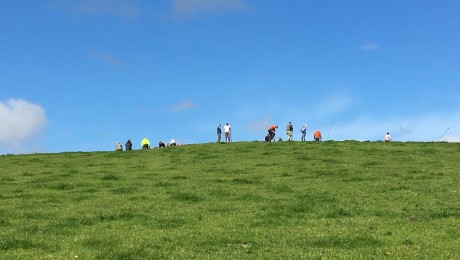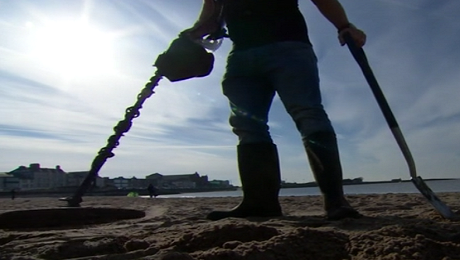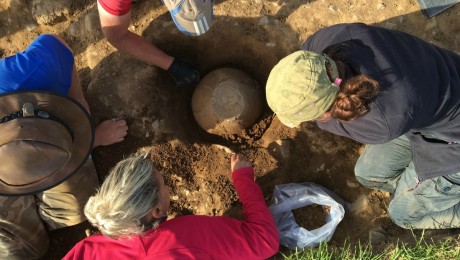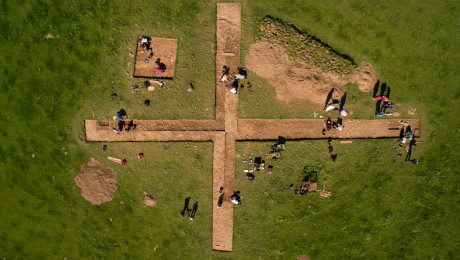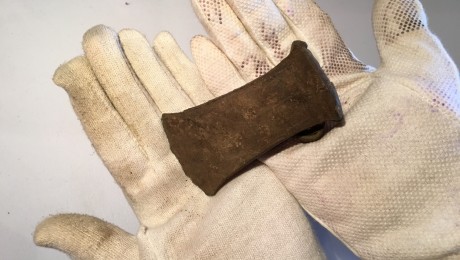Barrows are a common feature in many parts of the British landscape, and they come in all shapes and sizes.
Along with henges and hillforts, barrows are one of the most characteristic monuments of Britain’s prehistoric landscape.
Dating from around 3,000BC, these earthen funerary mounds can vary in size from five to six metres in diameter to over fifty. They can be found in isolation, or as part of a barrow cemetery: a sacred landscape with many barrows, which acted as a focus for ceremonial and ritual activity. Two of the most impressive cemeteries are located at Winterbourne Stoke in Wiltshire, which together contain over 20 barrows in close proximity.
The anatomy of a barrow
Broadly speaking, barrows can be divided into two main groups: long barrows (usually dating to the early Neolithic) and round barrows (which generally date to the early Bronze Age, but were also sometimes used by Roman and Saxon groups).
Bronze Age round barrows (like the ones we’re investigating near Morecambe and Lancaster) can vary significantly in form, as well as in size. The most common type encountered is a ‘bowl barrow’, which usually consists of an inverted bowl-shaped mound with a surrounding ditch.
You might also see ‘bell barrows’, which take the form of a bowl-shaped mound separated from its outer ditch by a level section of land, or the rarer ‘saucer barrows’ which encompass all of the above with the addition of an outer earthen bank. Round cairns are also a familiar sight, and these are defined by a mound of stone rather than earth.
The mounds that we see today in the landscape often represent the very last stage in a barrow’s long and varied life, with the overburden of earth effectively sealing off the activity area or burial. Throughout the course of their use, however, barrows were often significantly modified and extended as their role within the community changed and developed over time.
Barrows are most commonly associated with a group known as the Beaker People, who buried their dead with a distinctive ‘beaker’ style of pottery. They are universally known as the first makers or importers of metal in Britain, working first in copper and later in bronze. The presence of Beaker pottery in the North West of Britain is rare – only time will tell whether we will be lucky enough to find any Beaker remains during our excavations.
So how does the Morecambe Barrow compare?
Initial investigations into the barrow at Morecambe indicate that it consists of an enclosure, platform and small earthen mound, suggesting it’s likely to be a bowl barrow. Located on a prominent position in the landscape, it follows a shared tradition with other prehistoric monuments, ensuring it was highly visible and a site to be revered.
Excavations have revealed circular stones surrounding cremated remains inside the barrow. This confirms that, like most other barrows in Britain, it was used for burial.
The chronology of the artefacts recovered so far also suggests that this barrow was revisited and reused over a vast period, indicating it played a long-lasting role in the culture and heritage of the local Bronze Age community.
Like other prehistoric sites in the North West, such as the round cairns at Manor Farm (Lancashire) and Sizergh Fell (Cumbria), our barrow is likely to have evolved from a Neolithic circular enclosure, with the mound forming as a later addition.
The deposition of flint and metal tools found at the barrow is also a common feature shared by these sites and others across Britain. The tools themselves are often found broken, perhaps the result of a shared tradition of ritually ‘killing’ an object as part of the burial process.
And how about the Lancaster mound?
Once we start excavating the Lancaster mound, there’ll be even more to go on. From the little we have done, it’s looking like a burnt mound, but for now, we can only speculate.
Through our meticulous scientific excavation, we’ll be able to draw more detailed comparisons with other Bronze Age barrows in Britain, and reveal new evidence relating to how they were constructed, adapted and used.
